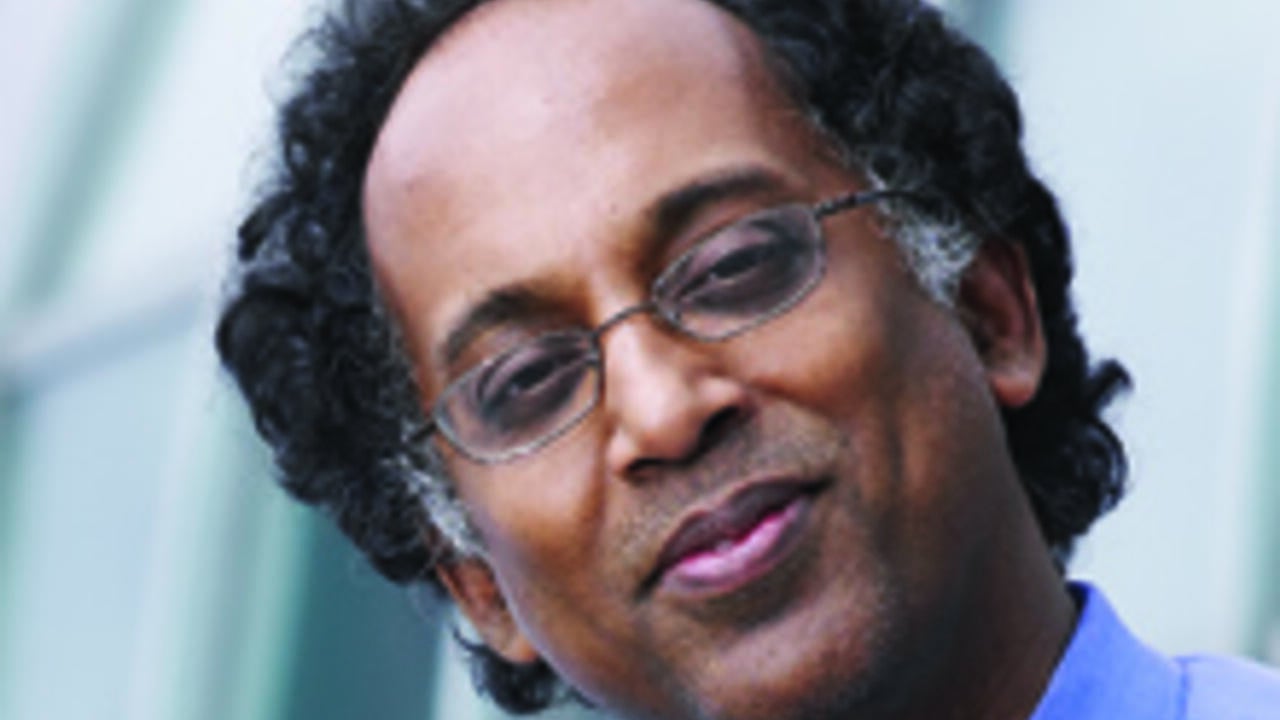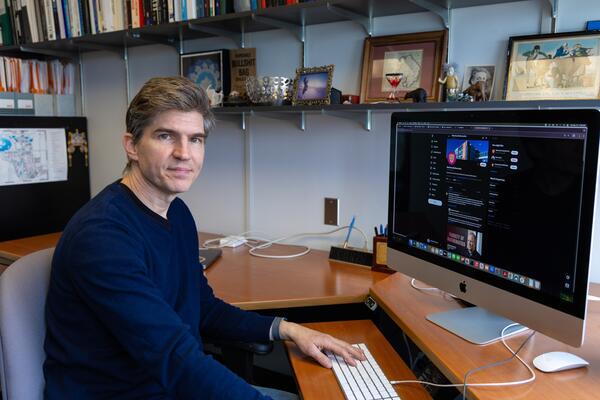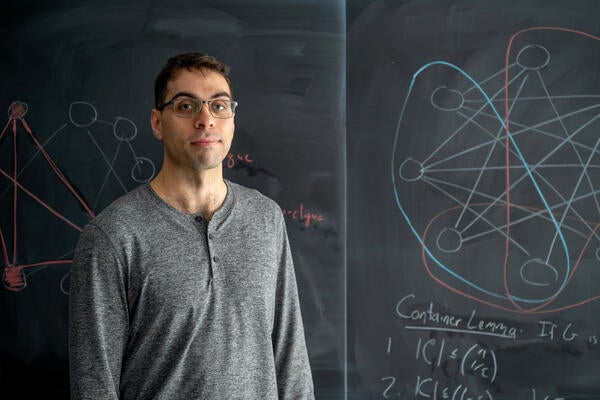
Mathematics and medicine are powerful partners
Mathematical modeling and biostatistics can help doctors calculate the best care options for a single patient, or influence health-care policy for millions.

Mathematical modeling and biostatistics can help doctors calculate the best care options for a single patient, or influence health-care policy for millions.
By Christian Aagaard Communications & Public Affairs A short animation Siv Sivaloganathan keeps on his computer reminds him that he’s making progress.
A short animation Siv Sivaloganathan keeps on his computer reminds him that he’s making progress.
A professor in the University of Waterloo’s Department of Applied Mathematics, Sivaloganathan’s research brings mathematicians and physicians closer together in the diagnosis of illness and care of patients.
The animation features two widely separated spheres — math and medicine.
At first, a tight rope tenuously links the two; but the crossing later becomes more stable, accommodating happy travellers in both directions.
“It was like the two solitudes’’ Sivaloganathan says, referring to 1960s term for the cultural divide between English and French Canada. “Math and medicine hadn’t talked.
“In this last decade, you actually see a huge number of mathematicians involved with medical people.’’
By quickly considering a wide range of factors — the pressure of fluid through tissue, for example — math can calculate probabilities and propose one or a number of care options.
People with hydrocephalus, an accumulation of fluid in the brain, are among the beneficiaries of this cross-disciplinary teamwork. Mathematical modelling can suggest the best place to insert a drainage shunt and relieve suffering.
It augments judgments doctors make based on their own experience, says Sivaloganathan, who is also a Director of the Centre for Mathematical Medicine, based at the Fields Institute for Research in Mathematical Sciences.
A wide world of stats
Health care doesn’t just consume numbers; it produces enormous quantities of its own.
Corralling and taming them into useful streams that advance the care of a single patient — or influence health-care policy for millions — makes up the science of biostatistics.
It’s a specialty of Waterloo’s Grace Yi and Richard Cook, professors in the Department of Statistics and Actuarial Science. They’re working on new means of analyzing medical and health-care information collected by studies over long periods of time.
“Newly developed statistical methods can quickly influence medical research and developments in other subjects,” Yi says. “As a result, our better understanding of disease, drugs, or treatment regimens can change within just a few years, with substantial economic ripple effects.’’
The spheres of medicine and mathematics are moving closer by the day.

Read more
Here are the people and events behind some of this year’s most compelling Waterloo stories

Dr. Chris Bauch, a professor of Applied Mathematics at the University of Waterloo, is part of a team that has developed a new approach to help public health officials predict where outbreaks might occur. (Elisabetta Paiano/University of Waterloo)
Read more
New research demonstrates that vaccine skepticism on social media can predict public health crises

Read more
Waterloo researcher Cameron Seth is breaking down the world’s hardest computer science problem piece by piece
The University of Waterloo acknowledges that much of our work takes place on the traditional territory of the Neutral, Anishinaabeg, and Haudenosaunee peoples. Our main campus is situated on the Haldimand Tract, the land granted to the Six Nations that includes six miles on each side of the Grand River. Our active work toward reconciliation takes place across our campuses through research, learning, teaching, and community building, and is co-ordinated within the Office of Indigenous Relations.